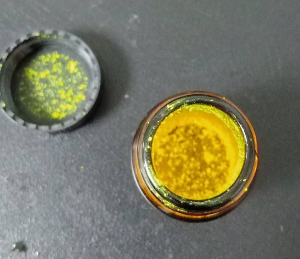| Message: | The luminescent agent acridinium ester 194357-64-7 is a luminescent substrate reagent used in chemiluminescence experiments. The following number is its CAS number. Its parent is acridinium ester. There are many differences depending on the substitution group contained. Characteristic derivatives, this one is called acridinium ester NSP-DMAE-NHS, which is one of the more commonly used ones.
The chemiluminescent acridinium ester is usually yellow powder, because it is sensitive to light, in order to extend the shelf life, it is usually packaged in an opaque brown bottle for low temperature storage. Compared with luminol, the chemiluminescence efficiency of acridinium ester is five times or more, and it can be directly oxidized by hydrogen peroxide under alkaline conditions to emit light without enzyme catalysis.
Acridinium ester NSP-DMAE-NHS is an acridinium ester containing -NHS group. NHS is N-hydroxysuccinimide or N-hydroxysuccinimide, which can directly interact with the primary amino group in protein or antibody. Connected for easy labeling of antibodies or proteins. -NSP is a propanesulfonic acid group connected to the nitrogen atom of the acridine parent. Compared with the traditional acridine ester AE-NHS, it has better hydrophilicity. The structure of propanesulfonic acid internal salt increases its water solubility and makes it The markers formed with antibodies and nucleic acids are water-soluble, and subsequent luminescence detection can be performed in water.
In addition to the acridinium ester NSP-DMAE-NHS, there are also 5 different types of acridinium esters developed and sold by Desheng, which are also the ones with better feedback from the current market, but it is not ruled out that more types will follow. The acridinium ester of the company was developed and launched on the market. |
 my account
my account
 log out
log out
 my account
my account
 log out
log out
